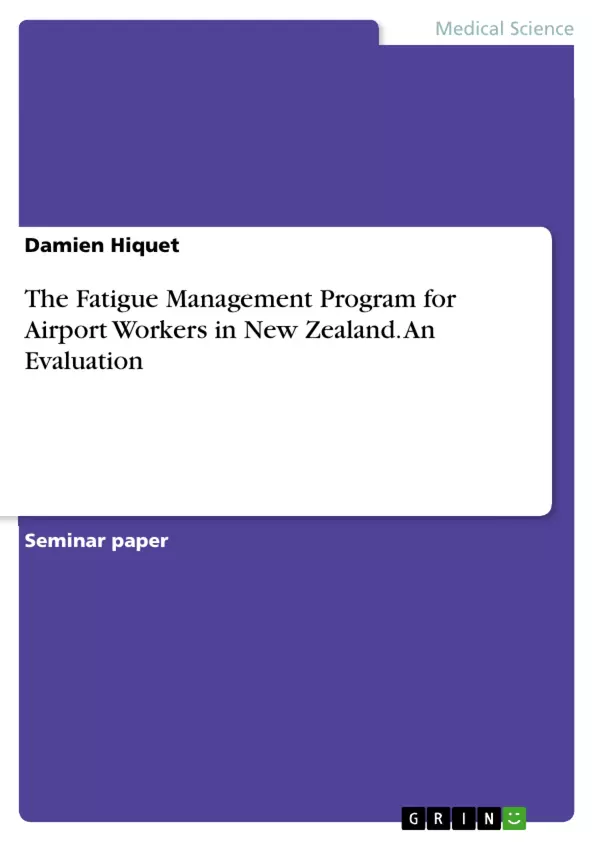This paper evaluates the fatigue management program for airport workers in New Zealand. Airports, like hospitals, never close, and, as such, healthcare providers and aviation professionals operate under a distinctive but shared set of circumstances. As a result, long and intensive shifts are common, sleep deprivation and fatigue are widespread.
Fatigue is an unavoidable consequence of modern airline operations due to shift work and crew duties which invariably are associated with some sleep disruption. There is a large variation between individuals in their ability to cope with sleep disruption and jet lag. In section sixteen, the Health and Safety Work Act 2015 (HSWA) recognises fatigue as a hazard implying that the Person Conducting a Business or Undertaking (PCBU) must manage it. For the civil aviation system, the International Civil Aviation Organisation (ICAO) has set the fundamental standards for fatigue risk management (FRM). Nationally, the Civil Aviation Authority (CAA) is the workplace health and safety regulator under HSWA.
Inhaltsverzeichnis (Table of Contents)
- Executive summary
- Purpose and objectives
- Evaluation process
- Conclusions and results
- Learning
- Behavior modification
- Transfer
- Reaction to the training experience
- Conclusion
- Recommendations
- References
Zielsetzung und Themenschwerpunkte (Objectives and Key Themes)
This document evaluates a fatigue management program designed for airport workers. The program's primary objective is to improve worker alertness, reduce fatigue, and enhance overall safety within the airport environment. The evaluation assesses the program's effectiveness in achieving these goals by analyzing its impact on learning, behavior modification, knowledge transfer, and overall worker satisfaction.
- Fatigue management in the aviation industry
- The impact of circadian rhythm on worker performance
- The relationship between sleep, alertness, and fatigue
- The evaluation of training programs for fatigue management
- Recommendations for improving fatigue management programs
Zusammenfassung der Kapitel (Chapter Summaries)
The executive summary provides a brief overview of the research, highlighting the importance of addressing fatigue within the aviation industry, particularly in the context of 24/7 operations. Chapter 2 delves into the program's purpose and objectives, outlining the specific goals and intended outcomes. Chapter 3 details the methodology employed in evaluating the program, outlining the assessment processes and data collection methods used. Chapter 4 presents the key findings of the evaluation, focusing on the program's effectiveness in promoting learning, behavior modification, knowledge transfer, and worker satisfaction. The chapter concludes with a summary of the overall results and insights. Chapter 5 outlines recommendations based on the evaluation findings, suggesting strategies for improving the fatigue management program and its effectiveness.
Schlüsselwörter (Keywords)
This research focuses on the evaluation of a fatigue management program in the aviation industry, emphasizing the importance of circadian rhythm, sleep, alertness, worker performance, and safety. The evaluation incorporates concepts such as learning, behavior modification, knowledge transfer, and worker satisfaction, aiming to contribute to the understanding of effective fatigue management strategies within the airport environment.
- Quote paper
- Damien Hiquet (Author), 2021, The Fatigue Management Program for Airport Workers in New Zealand. An Evaluation, Munich, GRIN Verlag, https://www.grin.com/document/1151307



